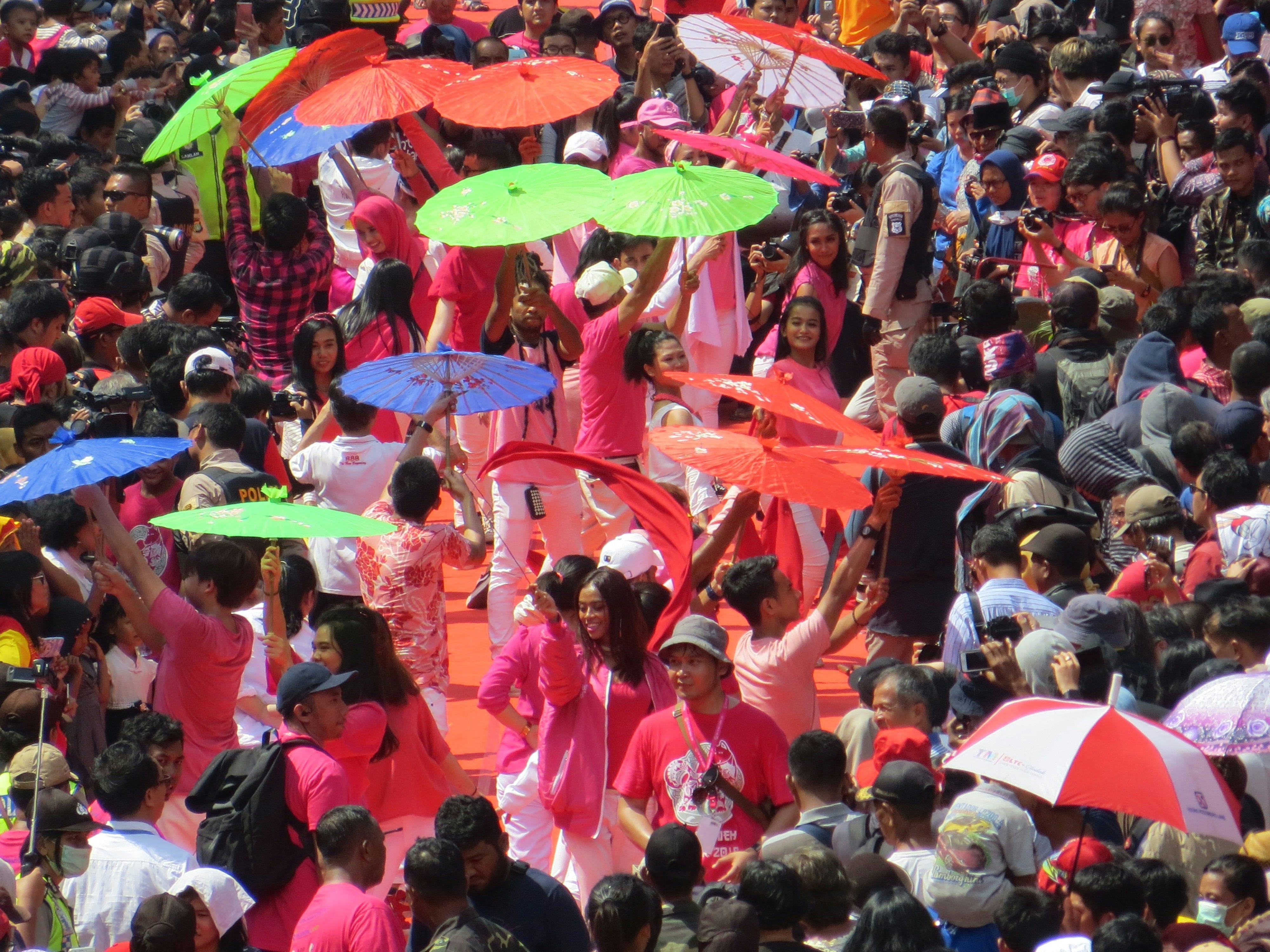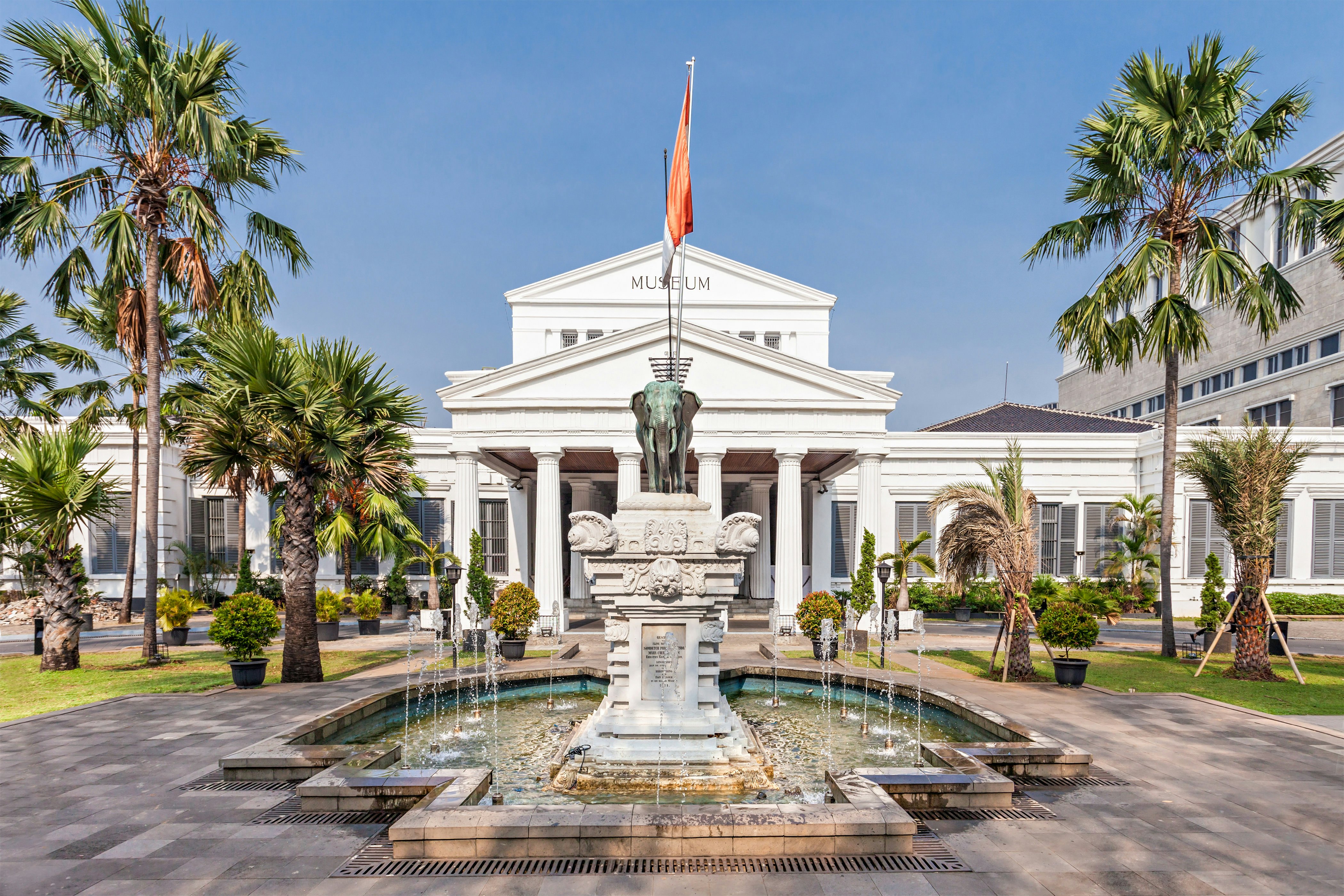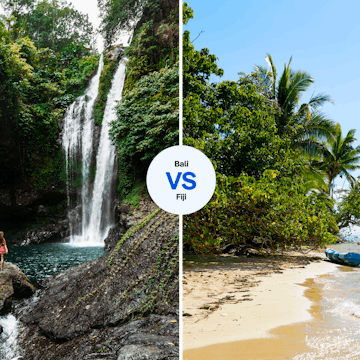

Jakarta is fast-paced, fascinating and fun © Andreas H / Shutterstock
Jakarta is sometimes overlooked by visitors bound for Java's ancient ruins or the beaches of Bali. But skipping this vast, teeming city in the far west of Java means missing out on world-class food and coffee, a historic old quarter, thriving art galleries, some of the best shopping in Southeast Asia and a surprisingly exciting nightlife scene.
First-time visitors to Jakarta can be overwhelmed; roads are heavily congested and the many skyscrapers are often screened by a thick layer of smog. However, there's plenty to see and just offshore are pollution-free beaches and islands. Here’s everything you need to know when visiting Jakarta for the first time.
When should I go to Jakarta?
Jakarta is hot and humid all year round, but there are two distinct seasons: a dry season that runs from May to September and a wet season running from October to April. The best time to visit is from June to August, when it’s dry and the humidity drops to manageable levels.
It’s also perfectly possible to visit in the rainy season, as the daily downpours tend only to last for a couple of hours, although flooding can affect parts of the city. Avoid traveling to Jakarta close to or during Ramadan, when many businesses close and hotels are booked out.

How long should I spend in Jakarta?
Most people visit Jakarta as part of a longer trip to Indonesia, spending just a few days exploring the capital’s historic center and checking out the excellent restaurant and cafe scene. But don't overlook the splendid shopping in street markets and the many malls, as well as the many worthy museums and lively art galleries.
Spend four days here and you'll have time for an overnight visit to the beaches of the Thousand Islands, where locals head for weekend breaks. The closest strands are just a 30-minute boat ride from Jakarta's Ancol Marina.
Is it easy to get to and around Jakarta?
About 35km (22 miles) west of the city, busy Soekarno-Hatta International Airport (CGK) is Jakarta’s principal airport, and all international and most domestic flights operate from here. Trains and buses link the airport to Jakarta or you can take a taxi.
Centrally located Stasiun Gambir is the main train station, with express services across Java operated by Kereta Api Indonesia (KAI). Trains are faster and more comfortable than buses, and sometimes cheaper. Passenger ships run by Pelni connect Jakarta with destinations across Indonesia.
With its expansive sprawl, Jakarta is not a walkable city and traffic jams are a way of life. The first line of Jakarta's evolving citywide MRT system runs south from Menteng in the center of the city. For destinations off the MRT line, visitors must depend on slow buses or taxis.
The most reliable taxi company is Bluebird – or use Grab, the Southeast Asian version of Uber. Go-Jek is a motorcycle ride service that’s useful for navigating central Jakarta’s jammed streets.

Top things to do in Jakarta
Old Jakarta
Start your tour in Kota in north Jakarta, where the vestiges of old Batavia – the colonial city built by the Dutch in the 18th century – cluster around Taman Fatahillah, a charming cobblestone square surrounded by handsome European-style buildings. Bicycles can be hired around the square, making it easy to scoot around the surrounding lanes, where you’ll find cafes, restaurants and hotels.
Be sure to check out the old town hall, which dates back to 1627 and now houses the Jakarta History Museum. Also worth a trip is the nearby Museum Wayang, which has a superb collection of Javanese puppets (and sometimes puts on free puppet shows).
Merdeka Square
In central Jakarta, Merdeka Square is the political and spiritual heart of Indonesia. Looming over this vast expanse of grassy parkland is the 132m-high (433ft-high) Monumen Nasional, also known as Monas or, more irreverently, ‘Sukarno’s final erection’, a reference to the former president of Indonesia who ordered its construction in 1961.
Merdeka Square makes a great retreat from Jakarta’s hectic streets and is always busy with locals kicking back. There are tremendous views across Jakarta from the top of the monument; get here early and avoid weekends if you don’t want to queue for hours.
Nearby are the Museum Nasional, which is packed with cultural treasures, and Galeri Nasional, with a big collection of work by Indonesian and foreign artists. Also here is Masjid Istiqial, Southeast Asia’s largest mosque (non-Muslims are welcome to visit if appropriately dressed).

Chinatown
From Taman Fatahillah, it's a short walk south to Glodok, which has been Jakarta’s Chinatown for centuries. Wandering the lanes and alleys here is an essential part of the Jakarta experience and there's great shopping here, including in the atmospheric and highly photogenic Petak Sembilan Market, where you'll find a sensory assault of fresh produce.
When you’re done sightseeing, pop into Kopi Es Tak Kie or Pantjoran Tea House, two of Glodok’s oldest cafes, for authentic Sino-Indonesian dishes and revitalizing coffee or tea.
Shopping in Jakarta's malls
Retail addicts have over 150 shopping malls to choose from in the Indonesian capital. The Grand Indonesia Mall and Plaza Senayan in Menteng are two of the most upmarket and popular malls, while the old-school Blok M mall is much more about local brands. For a more organic shopping experience, make tracks for the nearby Jalan Surabaya Flea Market, where antiques, textiles and all manner of collectible items await.
Jakarta's art and nightlife scenes
Head to Museum MACAN and the RUCI Art Space (in west and south Jakarta respectively) for insights into Indonesia’s burgeoning contemporary art scene. South Jakarta, and the area of Kebayoran Baru in particular, is where you'll find some of Jakarta’s finest bars and restaurants, such as the rooftop Skye, which offers stunning views and cocktails, or Plataran Dharmawangsa for traditional Javanese cuisine in a tranquil and refined setting.

The Thousand Islands
Finally, if you have the time, hop on a speedboat at Ancol Marina, a few kilometers north of Jakarta’s historic quarter, for a day tour or overnight visit to the Thousand Islands, where white-sand beaches and resorts create a striking contrast to Jakarta’s urban sprawl. You can also pop into the Ancol Luar Biasa fairground near the marina.
My favorite thing to do in Jakarta
I first discovered Glodok, Jakarta’s Chinatown, by accident, while idly strolling south from Taman Fatahillah on my first visit to Jakarta. These days, I return whenever I’m in town to explore Glodok’s narrow, winding alleys and streets lined with shophouses, hole-in-the-wall cafes and restaurants and Chinese Buddhist temples. It's the perfect antidote to the skyscrapers and shopping malls that dominate much of Jakarta.
There’s a timelessness to Glodok that’s unique in Jakarta, with the latest generation of Chinese-Indonesians carrying on businesses established by their ancestors generations earlier. I love the tang of spices floating in the air, the traditional pharmacies with their dark interiors and mysterious remedies and, above all, the delicious fusion dishes that can only be found in Glodok. I’m already looking forward to my next visit!
How much money do I need for Jakarta?
Jakarta is the most expensive destination in Indonesia, up there with Bali, but it’s still cheap by Western standards, so long as you don’t need a four-star hotel and are happy to eat at neighborhood restaurants rather than upscale places.
Museum entrance fees and taxis are a bargain, but alcohol is more pricey than elsewhere in Southeast Asia, especially wine and spirits, as Muslim Indonesia slaps hefty taxes on it. Here's a guide to local costs.
Dorm bed in a hostel: 130,000Rp
Three-star hotel room: 500,000Rp
Airbnb studio apartment: 400,000Rp per night
MRT ticket in town: 3,000Rp to 14,000Rp
Meal for two in a mid-range restaurant: 350,000Rp
Cup of local coffee: 20,000Rp
Small bottle of local beer in a bar: 35,000Rp

Frequently asked questions
There are a few questions first-timers always ask, so here are some tips to help you out.
How do I avoid traffic jams in Jakarta?
Avoid traveling in peak hours, from 7am to 9am and from 4pm to 6pm on weekdays. Roads are less congested on weekends, especially on Sundays. To avoid the traffic, choose a hotel near an MRT station so you can make as much use of public transport as possible.
What type of food will I find in Jakarta?
Jakarta is a great place to not only try Indonesia-wide staples such as nasi goreng (fried rice) but also to sample many different regional cuisines, whether that means Balinese classics such as babi guling (spiced spit-roast pig) or Sulawesi-style seafood, as well as Chinese-Indonesian fusion dishes. International food is also widely available for less adventurous palates. Don't drink tap water; purified water is available everywhere.
Do I need to bargain and tip in Jakarta?
Bargaining is the norm at Jakarta’s many markets, and it's also possible at some shopping malls. As a general rule, if the cost of an item is displayed, the price is usually fixed; if not, bargaining may be possible. Remember that it’s always best to haggle with a smile. Tipping is not generally expected, but leaving a small gratuity when you dine out is always appreciated.















